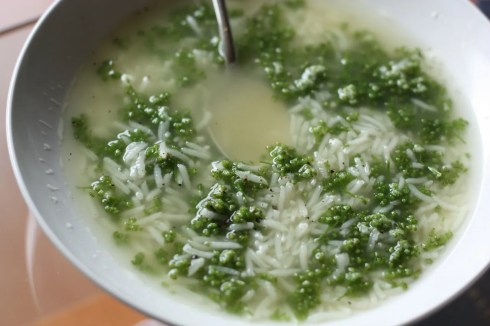I spotted these at the edge of the Condesa tianguis a few weeks ago, at the stand in front of the Oxxo. The stand is staffed by a man and a woman from Ixtlahuaca, in the State of Mexico, and I like to buy there because they always have farm-fresh produce and homemade tortillas and wild mushrooms when it’s mushroom season.
I hadn’t seen these specific quelites before, so I asked the woman what they were. She said chivitos. I liked their long stems and thin, tender leaves, so I bought a bag for around 15 pesos. Thought about combining them with quelite cenizo in a salad and figured the contrast in shapes would be nice. It was — the cenizo-chivito salad was the best I think I’ve ever made in my life. It was grassy and green, and I was overwhelmed with the sense that I was eating something directly from the ground.
According to my helpful quelites research guide (“Los quelites, tradición milenaria in México” by Delia Castro Lara, Fracisco Basurto Peña, Luz María Mera Ovando and Robert Arthur Bye Boettler), it turns out chivitos (calandrinia micrantha) are one of the handful of “collected” greens in Mexico, which means they’re not cultivated. They tend to grow in corn fields or in the milpa, and they are are also called lengua de pájaro, or bird’s tongue.
The taste is interesting. Chivitos have the crunchy juiciness of lettuce, with a slight bitter aftertaste, like spinach. And they’re herbal and grassy.
Besides the quelites salad, I also used chivitos plain on their own, topped with a little lime juice and olive oil, as a side salad to roasted chicken and potatoes. This morning mixed them with scrambled eggs, topped with some roasted tomato salsa. Yum.
If you want to seek them out, the man-and-woman team usually arrive to the Tuesday Condesa tianguis around 11 a.m. If they’re out of quelites, you could also try another farm-fresh stand on the opposite end of the tianguis, sort of catty-corner to the chicharrón.


















